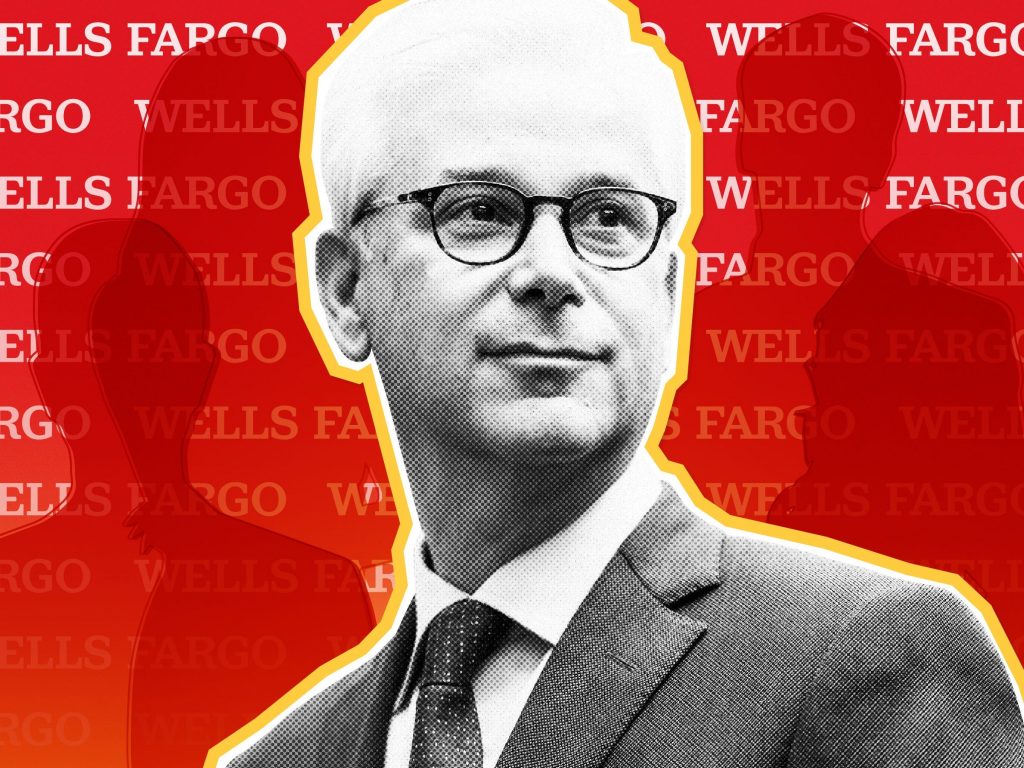- Wells Fargo has laid off some employees and fired others in its mortgage division.
- It's also faced scrutiny over lending and hiring practices.
- Here's the latest on what's happening at the bank, and how its CEO is changing its leadership ranks.
The road to victory has not been easy for Charlie Scharf.
Scharf, 57, was placed at the helm of Wells Fargo in 2019 to help the San Francisco bank navigate its way out of a series of consumer scandals. In that time, he's made some big moves, including overhauling the bank's leadership ranks and beefing up compliance. But controversy continues to haunt to the nation's third largest bank.
Despite Scharf's efforts, Wells Fargo was accused in June of conducting sham interviews with women and nonwhite candidates for jobs that had already been given to others. In March, Bloomberg said the bank had engaged in discriminate lending practices, which Wells Fargo denies. It also recently fired dozens of loan officers it had accused of improperly changing home valuations in its internal system to trigger appraisal waivers.
Scharf was put in place specifically to help the bank move beyond a series of scandals that began with the 2016 regulatory fines over the opening of fake accounts. The fake account scandal led to a Federal Reserve asset cap that the bank is still subject to, limiting its growth, all while Scharf has pledged to cut $10 billion in costs from the bank's bottom line.
Here's a rundown of what's happened since Scharf took the helm, including layoffs and firings, hiring issues, and what the bank's leadership looks like now.
How Scharf is making changes
Scharf has dramatically overhauled the bank's leadershipsince he became CEO in 2019. Wells Fargo has brought in more than 90 top executives from outside the bank in that time.
Wells Fargo has also "drastically changed" how it operates its $2 trillion wealth management business, Scharf said at a recent industry conference. He said the goal behind some of the moves has been to provide more uniform services and products to investors to clients.
Scharf has also said he plans grow businesses that will put Wells in direct competition with banks like JPMorgan and Goldman Sachs, including credit cards and investment banking. At the same time, he wants to pare back on mortgage lending business, Scharf said in June.
There's more pain to come for Wells Fargo's mortgage business. Analysts break down why — and how home lending fits into CEO Charlie Scharf's master plan.
Wells Fargo CEO Charlie Scharf on how the bank is revamping its $2 trillion wealth management arm
Mortgage layoffs, firings
Wells Fargo laid off home lending employees in at least five major markets in April as the Federal Reserve starting ticking interest rates higher. The bank had reported in April that its home revenues fell to $1.5 billion in the first quarter, down 33% over the same period a year earlier.
In May, Insider reported that Wells Fargo fired dozens of loan officers that it accused of misusing so-called appraisal waivers, which give borrowers and their loan officers the right to bypass a home appraisal on mortgages originated by lenders such as Wells Fargo and sold to Fannie Mae or Freddie Mac if the loan meets certain conditions.
The bank terminated the employees "after a robust investigation revealed they engaged in misconduct," a Wells Fargo spokesman told Insider. But some loan officers protested the terminations, telling Insider that some of the instances dated back to the first half of 2020 and that guidance from senior managers at the time was not clear.
Read more:
Scrutiny over lending practices, hiring
In March, a Bloomberg report revealed that Wells Fargo rejected more than half of Black homeowners' refinancing applications in 2020. A Wells Fargo spokesperson told Insider in June that it is "confident that our underwriting practices are consistently applied regardless of the customer's race or ethnicity."
The spokesperson added that Wells Fargo funded "twice as many loans overall" to Black borrowers in 2020 as the next largest bank, if loans originated and purchased from correspondent sellers were included.
Then in June, the New York Times reported that Wells Fargo had been conducting sham interviews with women and nonwhite candidates for jobs that had already been given to others, according to interviews with several current and former employees interviewed for the story. The employees did so ostensibly to meet diversity requirements on paper, the report said.
A Wells Fargo executive told Insider that the firm's hiring diversity rule — having 50% of all interview candidates be from an underrepresented background — has worked to increase diversity at the company.
Read more:

